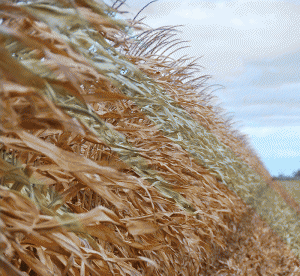Viney weeds
FOUR SPECIES YOU SHOULD BE WORRIED ABOUT
SCOUTING IN-AND-around your fields is the first defence to protecting them from viney weeds.
“Wild buckwheat, field bindweed, tufted vetch, and bur cucumber are definitely weeds that occur in Ontario grain fields,” says Dave Bilyea, a weed scientist technician with the University of Guelph Ridgetown Campus.
Listed below is information on these four viney weeds Bilyea says you should be concerned about.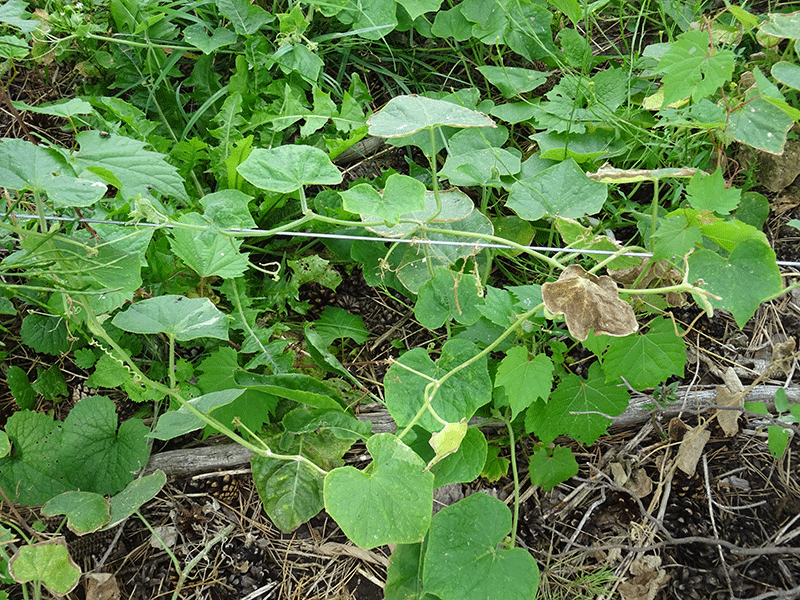
BUR CUCUMBER
While bur cucumber is less prevalent than other viney weeds and generally only infests pockets of a field, Bilyea says this aggressive member of the cucumber family can easily invade and overwhelm a crop, growing up to eight metres in a single season. Its tangled web of vines can also make the mechanical harvesting of crops nearly impossible. Bilyea says this annual tends to germinate early in the growing season and continues to emerge from deep in the soil (8-10 cm) throughout the spring. It has a hairy stem and its seeds are covered with many sharp and barbed spines consisting of a cluster of anywhere from three-to-10 seeds, which Bilyea notes can also contaminate corn seed.
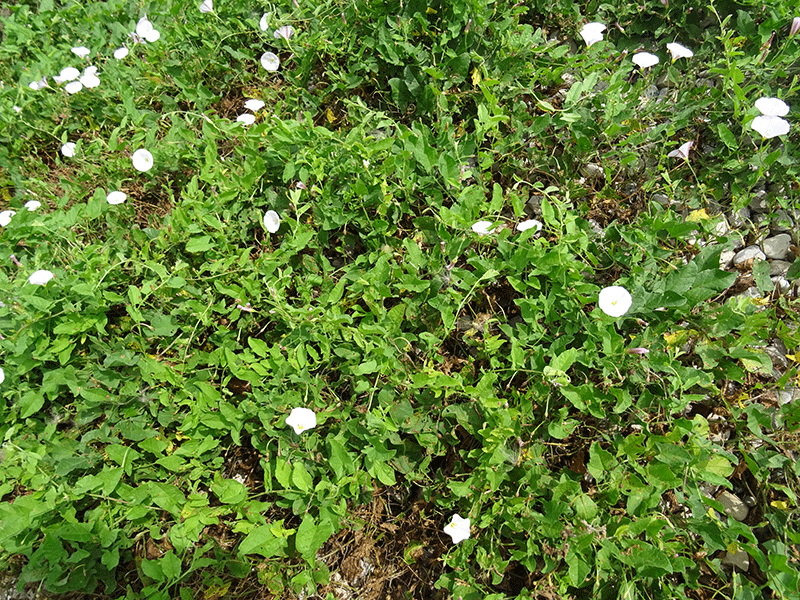
FIELD BINDWEED
According to Bilyea, field bindweed is listed as one of the most troublesome weeds not only throughout North America, but the world. It’s listed as a primary noxious weed under the federal Weed Seeds Order, a Ministerial Order under Canada’s Seeds Act. This perennial member of the morning glory family has an extensively spreading and very persistent, whitish underground root system that can penetrate up to six metres. Bilyea says the seeds have a hard coating that allows them to lay dormant for up to 20 years. Field bindweed can be identified by its slender stems with smooth or very fine hair, which usually twine or curl; and alternate 1-node leaves (which are very variable in form but are commonly arrowhead-shaped with 2 basal lobes and smooth margins) with short or long stalks.
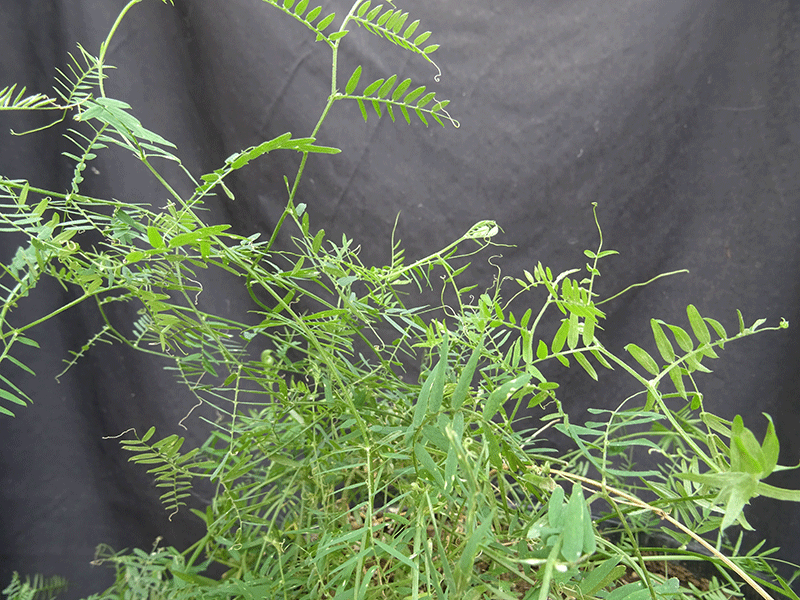
TUFTED VETCH
This flowering perennial is a particularly troublesome crop and seed contaminant mainly to cereals. Bilyea says not only does tufted vetch affect the cereal crop growing, but it impacts the grain quality at harvest as well. It has an extensive root system of rhizomes that make it difficult to control. Bilyea adds that weed control studies have also shown it to be tolerant to fairly high rates of glyphosate, so control can be a problem the following year in an entirely different crop. In addition to its spreading underground rootstalks, tufted vetch can be identified by its compound leaves with eight-to-12 pairs of leaflets and branching tendrils, with many flowers clustered on one side of a long stalk, and it’s flattened, brownish seedpods containing up to eight rounded seeds.
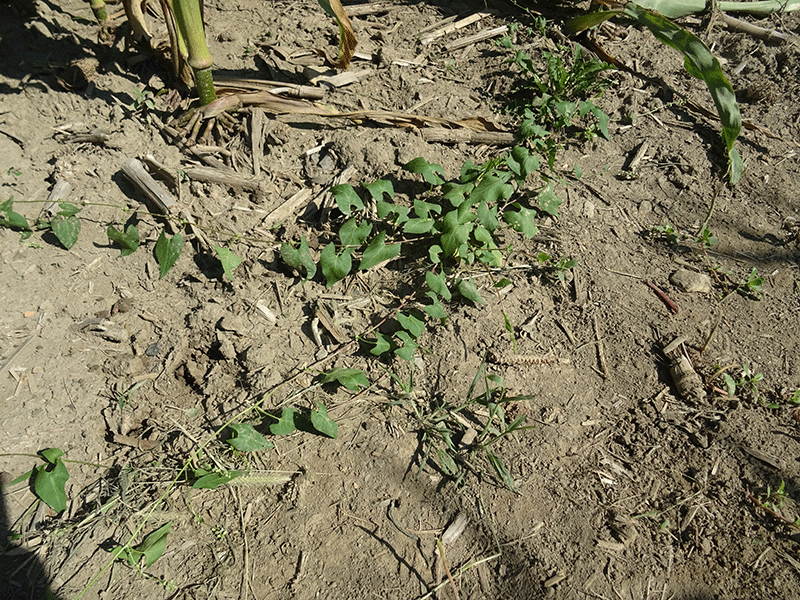
WILD BUCKWHEAT
The most prevalent viney weed that infests all types of crops throughout Ontario, Bilyea says wild buckwheat is a problematic crop competitor, is a contaminant in crop seeds, and it’s numerous vines can interfere with harvest. This fast-growing flowering annual vine has heart-shaped leaves with an ocrea, a tubular sheath at the node of the stem which is created by the fusion of two stipules.

OTHER TROUBLESOME VINEY WEEDS
Bilyea says others viney weeds such as wild cucumber, wild grape, virgin’s bower, climbing nightshade, tuberous vetching, and Virginia creeper are nuisance weeds that crawl over fence and tree lines. And, while these are generally considered perimeter weeds, he notes that they can still impact agricultural operations.
Poison ivy, while very common, is another perimeter weed that Bilyea says should be dealt with because it‘s a known health hazard.
As well, dodder and dog-strangling vine are noxious weeds that Bilyea says should also be controlled if discovered.
CONTROLLING VINEY WEEDS
Darren Robinson, a weed control specialist with the University of Guelph Ridgetown Campus, says many viney weeds can be difficult to kill and control. When you look at the different grain crops, he says controlling viney weeds in corn is probably easiest and soybean would be one of the most difficult.
“The reality is viney weeds are just hard to kill,” says Robinson. “In corn, your best option is to tank-mix (glyphosate) Roundup with a Group 4 hormonal herbicide like 2,4-D or Dicamba, and with soybean, you pretty much have to use a high rate of Roundup.”
Robinson says the product label will show the highest rate possible you can apply for a lot of the viney weeds.
Specific to tackling bur cucumber, Robinson says the best option is to use Guardian Preplant post-emergence.
As far as being proactive in the fall, Robinson says you have to be conscious of the viney weeds’ root systems.
“You have to be careful with tillage because a lot of these viney weeds have root systems or rhizomes that can be spread around,” he says. “I think the best thing you can do around field margins is spot spraying and timing it for when the plants are in bloom.”
As Robinson explains, when the plants are in bloom, physiologically, what’s happening is the plants are beginning to allocate their internal resources to seed production and to their underground roots in preparation for the winter. So, it’s the perfect time to get that herbicide travelling down to into the roots.
He says spring can be a good time for tackling any viney weed too.
“That’s when it’s young and succulent,” says Robinson. “If it’s germinating from seed, then it’s really vulnerable to the herbicide as well.” •























